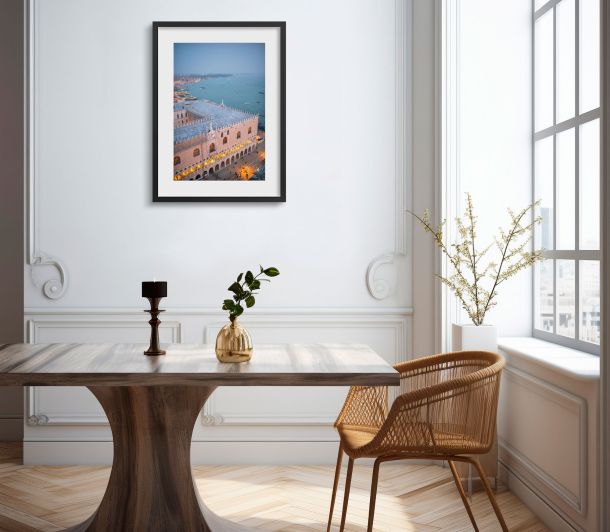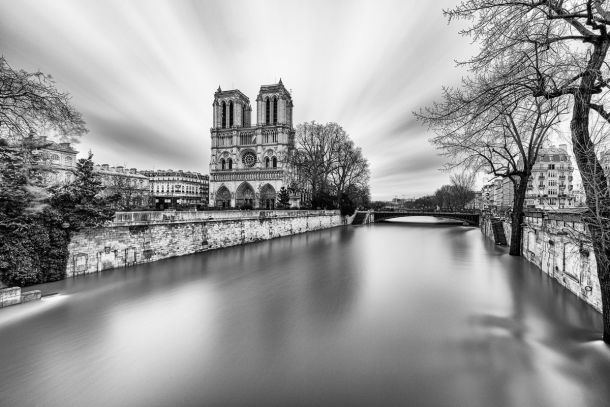Is Photography Truly Art? Understanding Its Place in the Art World

Glitches: Greek Coastline IV – Photo: © Sebastien Desnoulez
On an online gallery like Une image pour rêver, one question keeps coming back—sometimes whispered: “Is photography art… or just technique?” For nearly two centuries, philosophers, historians, and institutions have explored the topic. This article offers an overview of why photography has earned its place in the art world—and how it can influence your own choices when selecting a print for your home.
A debate that has accompanied photography since its origins
When photography emerged in the 19th century, many considered it a practical tool for recording reality—useful for science, memory, or documentation—while painting and sculpture retained the privilege of imagination and “noble” artistic expression.
Very early on, however, some photographers pushed against that boundary. The pictorialist movement, for example, used blur, handmade effects, and intricate printing techniques to elevate photography into a mode of artistic expression. The message was clear: a photograph can interpret the world, not just replicate it.
In the early 20th century, figures such as Alfred Stieglitz and the Photo-Secession movement solidified this view by curating exhibitions, publishing manifestos, and establishing photography as a full-fledged creative medium.
A symbolic turning point came when New York’s Museum of Modern Art (MoMA) established a photography department. When prints were exhibited alongside paintings and sculptures, it sent a clear message: photography had entered the realm of art.
Walter Benjamin: reinventing the “aura”
In the 1930s, German philosopher Walter Benjamin analyzed how mass reproduction—especially through photography—affected our relationship with art. Since a photo can be multiplied endlessly, it challenges the concept of a single, irreplaceable “original”.
Benjamin coined the term “aura” to describe the unique presence of an artwork in time and space—something easily lost when an image is mechanically reproduced in magazines or posters.
His critique sparked a long-running debate: If a photo can be endlessly reproduced, can it still be called art? The answer, today, lies in how uniqueness is reintroduced—through paper selection, print control, limited editions, and the artist’s signature.
This is the very essence of fine art photography galleries: restoring material value and rarity to a medium designed for duplication.
Susan Sontag: between social function and artistic intent
In the 1970s, American writer Susan Sontag observed that for most people, photography isn’t primarily about art—it’s about documenting life. We photograph birthdays, vacations, loved ones. It’s a social habit, a proof, a memory.
And yet, photography can be art—precisely because it selects, frames, and interprets reality. As Sontag noted, two people capturing the same scene will never produce the same image. Photography is a way of seeing the world.
She also made a key distinction: a beautiful or technically perfect photo isn’t automatically an artwork. It becomes one through the author’s vision, the intention behind the image, and the context in which it is shown—especially in an exhibition space.
In short, not every photograph is art, but many deserve a place in the realm of creativity and contemplation.
Roland Barthes: when an image truly moves us
In Camera Lucida, French theorist Roland Barthes shifted the conversation toward emotional impact. He introduced two concepts:
- studium: the general, intellectual understanding of a photo—its topic, context, or subject;
- punctum: a piercing detail that touches us personally—unexpected, sometimes unexplainable.
For Barthes, this punctum is what gives a photograph its artistic force. It’s not just about technique or composition—it’s about emotional resonance, a silent link between the viewer and the image.
This is what often happens in galleries: someone stops in front of a photograph and says, “I don’t know why, but this one speaks to me.” That moment lies at the heart of fine art photography.
Museums have already answered the question
Historians such as Beaumont Newhall and Aaron Scharf have documented how photography has evolved from amateur circles to the most prestigious collections. Today, photography has a solid place in the world’s leading museums.
Whether humanist, documentary, conceptual, or abstract, photographs now hang on the same walls as paintings and sculptures. Major exhibitions are entirely devoted to photography. In practice, the art world has already embraced photography.
The real question now isn’t “Is photography art?” but rather “Which types of photography earn that status—and why?”
When can we speak of fine art photography?
An artistic vision—not just technical skill
Fine art photography is not about lucky shots. It’s about developing a point of view, a series, a visual language. Photographers return to the same subjects, explore themes, and craft a consistent narrative—be it poetic, political, graphic, or contemplative.
A deliberate use of form, light, and aesthetics
Like painters, fine art photographers make precise choices: perspective, framing, depth of field, contrast, movement, and color. Even spontaneity is guided by intent.
A tangible artwork—not just a digital file
Fine art photography is a physical object—a print made with purpose, on carefully selected paper, in a size that matches the image and its space. Numbered, signed, and printed in limited runs, it becomes an artwork in itself.
A way to shift our perspective
Art is about changing how we see. A fine art photograph might reveal something overlooked, reframe the ordinary, evoke a feeling, or question a situation. It doesn’t just depict the world—it interprets it.
The position of Une image pour rêver
At Une image pour rêver, we believe that photography is a full-fledged art form—but one that must embrace what makes it unique.
That’s why we commit to:
- Selecting photographers who build coherent bodies of work with clear artistic direction—be it poetic, documentary, or abstract;
- Producing true fine art prints with top-tier papers, controlled printing processes, signatures, and limited editions that give each image value and longevity;
- Rejecting disposable décor: our images are not generic visuals, but thoughtful artworks designed to resonate over time with a space and its atmosphere;
- Helping our collectors through context, storytelling, and advice—so each person can find a photograph that truly speaks to their home, their story, their emotion.
The question isn’t whether photography deserves to be in the art world. The question is:
What place will you give it in your own space, with your own light—and your own story?
Choosing a photographic artwork for your home
When you select a piece from our gallery, you’re not buying mere decoration. You’re choosing:
- a singular vision of a place, a person, or a moment;
- a specific treatment of light, material, and emotion;
- a certified object—signed, numbered, and built to last.
This is the philosophy behind Une image pour rêver: fine art photography that brings meaning into everyday spaces—homes, offices, hotels—and transforms them.
Ready to explore? Browse our collection of limited-edition photographic artworks, each available with customized formats and framing options.
Further reading
To deepen your understanding of photography’s place in the arts, here are a few thought-provoking works and reference texts:
- Walter Benjamin – Essays exploring how mechanical reproduction challenges traditional notions of originality and artistic aura.
- Susan Sontag – Writings on photography as both a social ritual and a creative act that shapes how we perceive the world.
- Roland Barthes – His seminal book Camera Lucida focuses on emotional resonance and the personal impact of certain images.
- Histories of photography – Foundational works by authors like Beaumont Newhall and others, tracing the evolution of photography into a recognized artistic medium collected by major museums worldwide.



